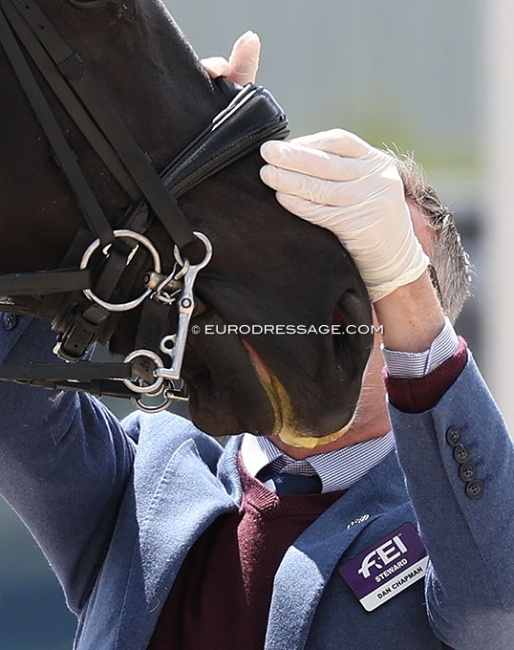
The Swedish equestrian federation posted an article in which it celebrates the efforts it has made and changes implemented to improve dressage sport in Sweden in the past decade.
"Over the past ten years, Swedish dressage has undergone many changes. And the journey of development continues. The goal is to strengthen horse welfare, focus more on harmony, increase quality and open up the sport to more people," the Swedish equestrian federation posted.
"Through continuous rule changes, pilot projects and close collaboration with the national team management, the Swedish Equestrian Federation's dressage committee has worked purposefully over the past decade to strengthen horse welfare, open up the sport to more people and raise quality at all levels, from young riders to the international top level."
A short summary of some of the changes they implemented:
Spurs and Curb Optional, Helmets Mandatory
The first steps towards greater freedom of choice for riders were taken as early as 2015. At that time, the use of the curb bit and spurs became voluntary, something that was unique in an international context.
"It is easy to forget that spurs and the curb have been optional for so many years. Since bit is still a requirement internationally, it is still widely used at the national level. But we wanted to open up the possibility and make it optional where the decision lies with the rider to consider what they feel they need and what suits the horse best," said dressage committee chairwoman Maria Nilsson.
In 2017, FEI Children's classes were introduced at Swedish Championships, opening up the opportunity for more young riders to compete in championships. In the same year, helmets were also made mandatory at national dressage competitions. Internationally, the FEI followed suit with the same helmet requirement in 2021.
Mouth and Noseband Checks
With a focus on horse welfare, mouth and noseband control was introduced in 2018. In 2019 when the possibility of riding bitless dressage classes was introduced.
Since 2019, the first competition start for a 4-year-old horse may take place no earlier than April 1 (editor's note: this is not the case for competitions hosted by the Swedish Warmblood society, which still has 3-year old classes).
Harmony Judging
2024 marked an important step in the continued development of Swedish dressage. At that time, the National Championships were introduced with harmony judging as a central feature. The harmony between horse and rider was also emphasized through targeted training for judges who judge 4-year-old young horse classes.
"We have the horse and rider at the center and we want to see harmonious riding," Nilsson explained. "We have a dialogue with the judges about how harmony should be assessed. If two combinations have the same points, we want harmony to be the deciding factor. We have good discussions in the dressage committee and that is also a reason why it has moved forward. The pilot project with children's assessment has been well received by the participants. The fact that the judges can give young riders feedback immediately after the ride makes a lot of sense. The concept gives the rider a greater opportunity to understand the background to the assessment that has been made.
Further Steps Taken
In 2025 further steps were taking, including the optional use of the noseband, the posting trot in tests up to LB:3, and harmony became a fixed assessment point in young horse programs, in addition to already being applied in young pony classes and as a pilot project in children's classes.
The Dressage Committee emphasizes that the process of change is based on a long-term approach and dialogue, with continuous review of the existing regulations.
"It is not a disadvantage that critical issues have been raised," said Nilsson. "It shows that the subject is engaging and has led to important issues being raised. Changes are made gradually without hasty decisions so as not to have to backtrack if necessary. Our various pilot projects are very good examples of something being tested before we implement it in the rules. We take one step at a time and do everything to go in the right direction."
At high performance, elite level there is a close collaboration with the national team management.
"We think it's great that all Swedish riders got over 70 percent in the Grand Prix at the European Championships, which indicates a high minimum level," said Nilsson. "There's still some way to go to the real top, but this year it still felt like a really good European Championships. In dialogue with the national team management, we've also gotten the impression that there are many pairs on their way up and knocking on the door. We have so many great teams now, there's no question about it."
Related Links
Snaffle Allowed in Swedish National Grand Prix Classes
The Double Bridle: An Instrument of Understanding
Classical Training: To Snaffle or Not To Snaffle
Noseband Special: Part I: The History of the Noseband
Noseband Special: Part II: The Purpose of the Noseband
Noseband Special: Part III: Riders and Trainers on Their Choice in Noseband
Noseband Special: Part IV: The Thicker, the Wider, the Better?